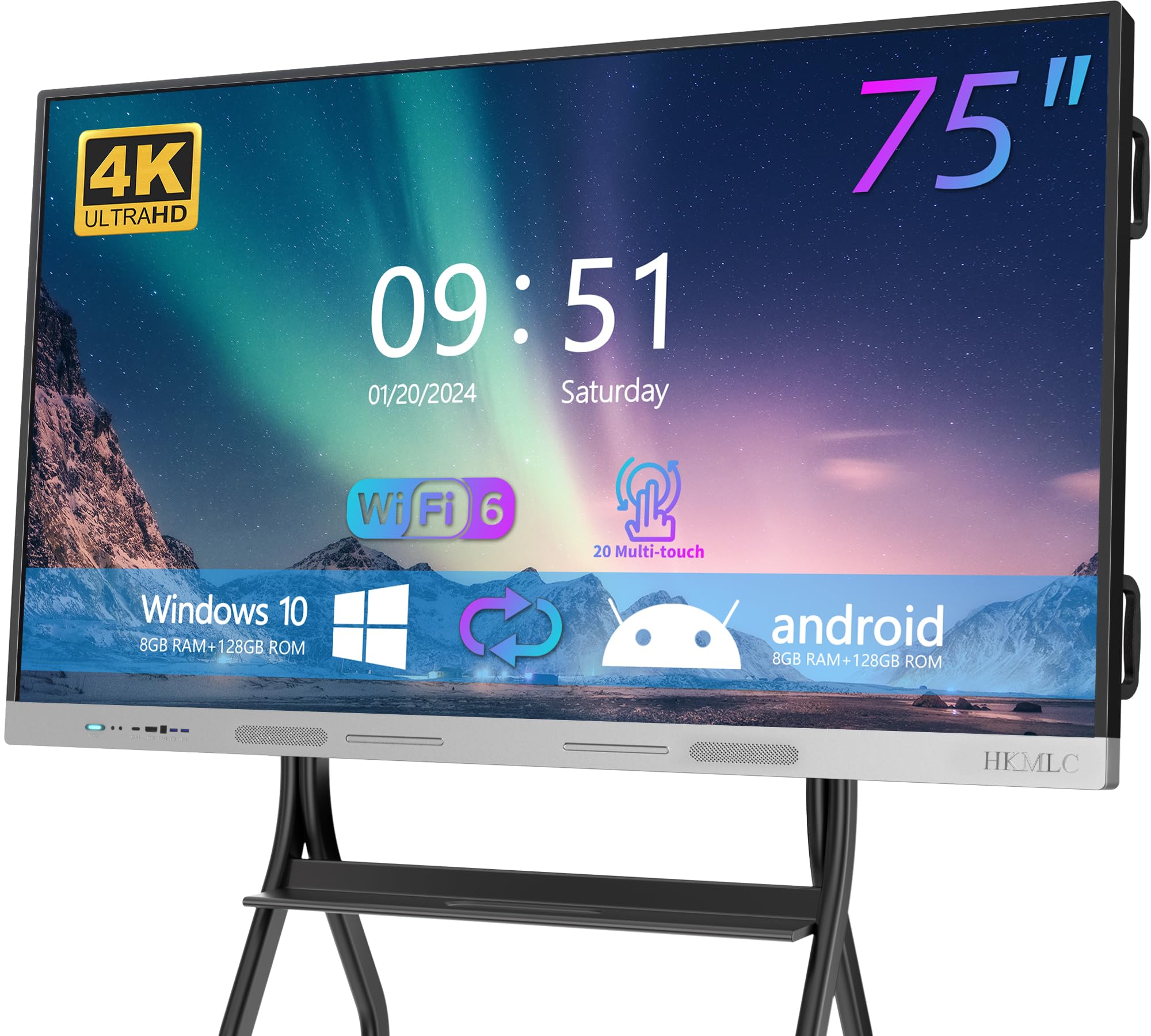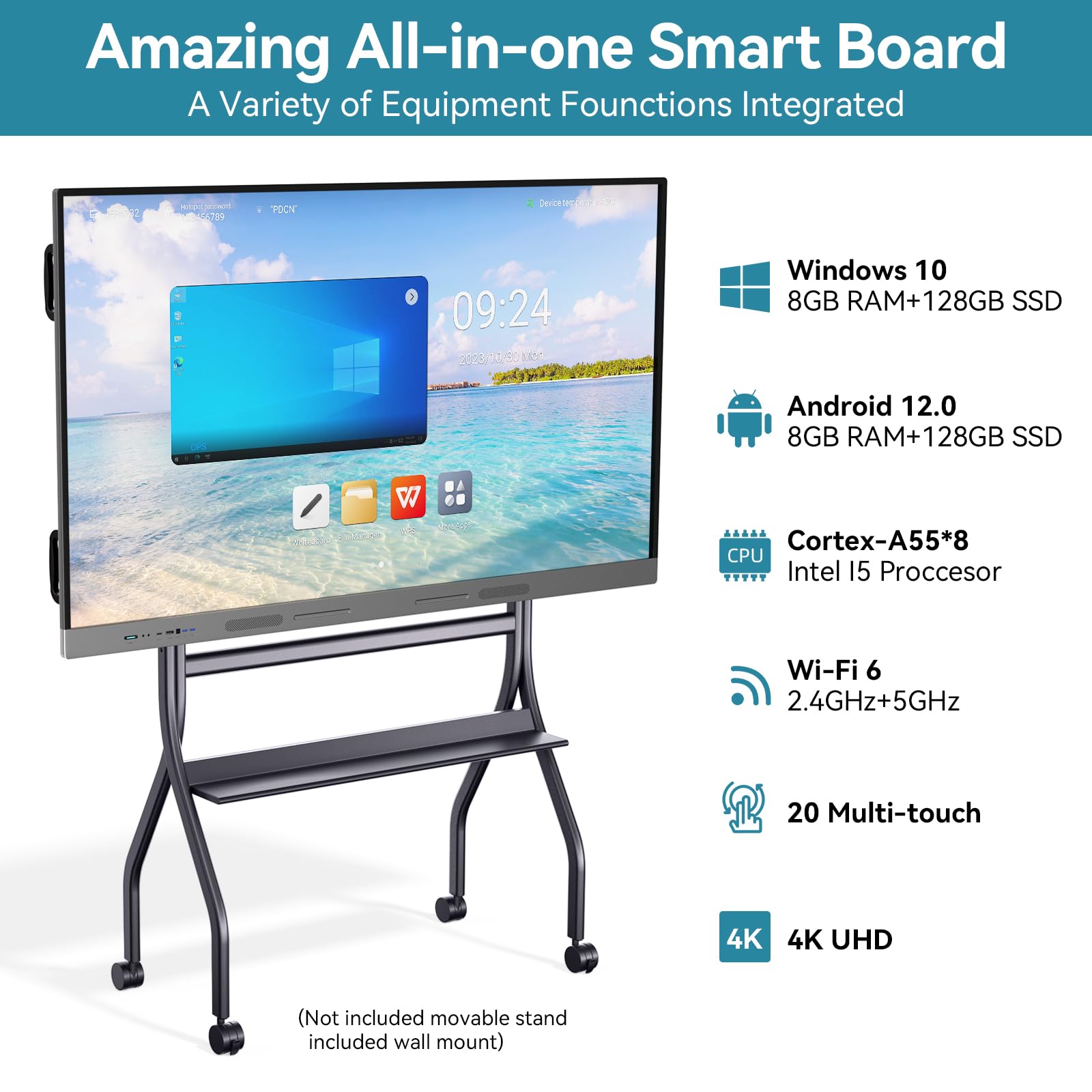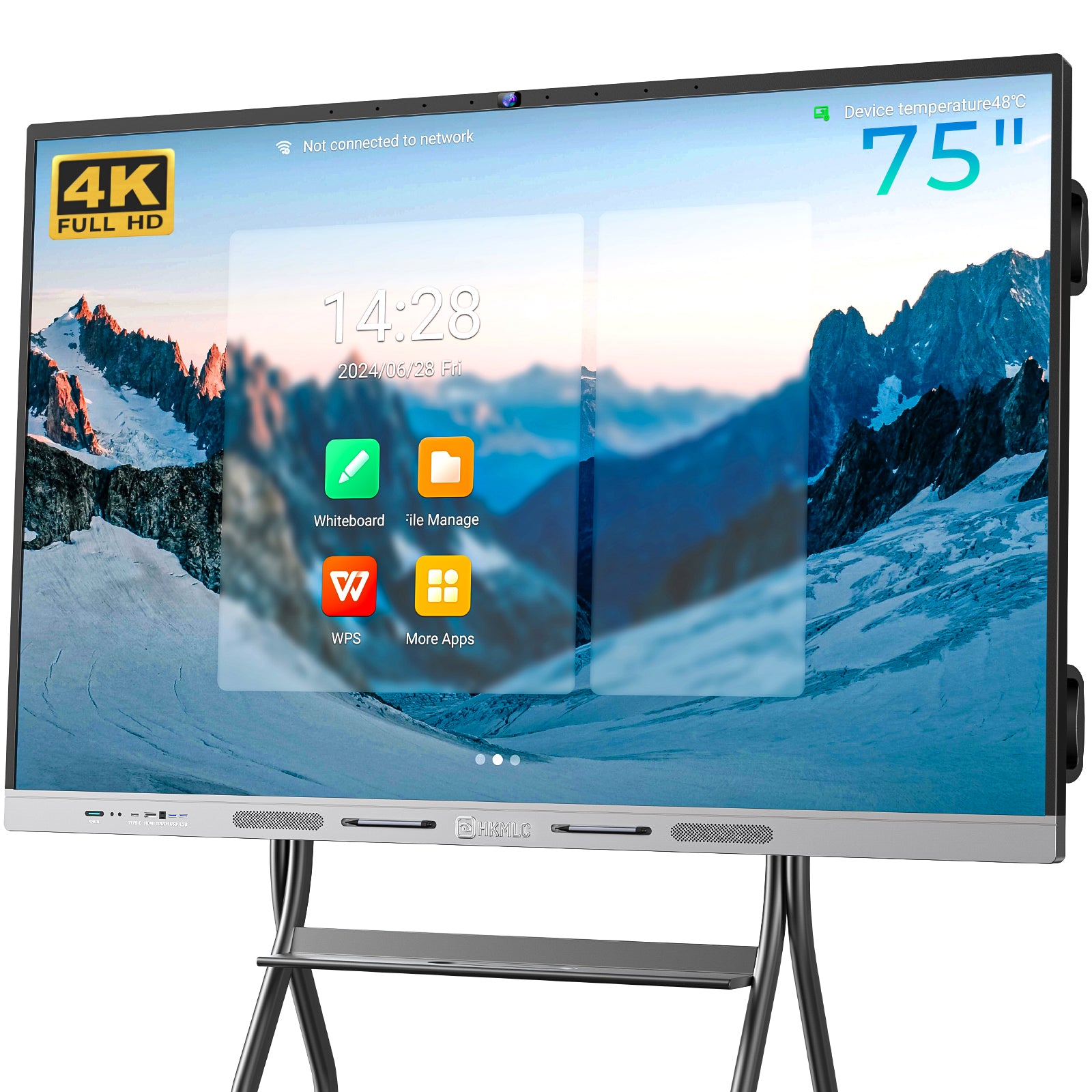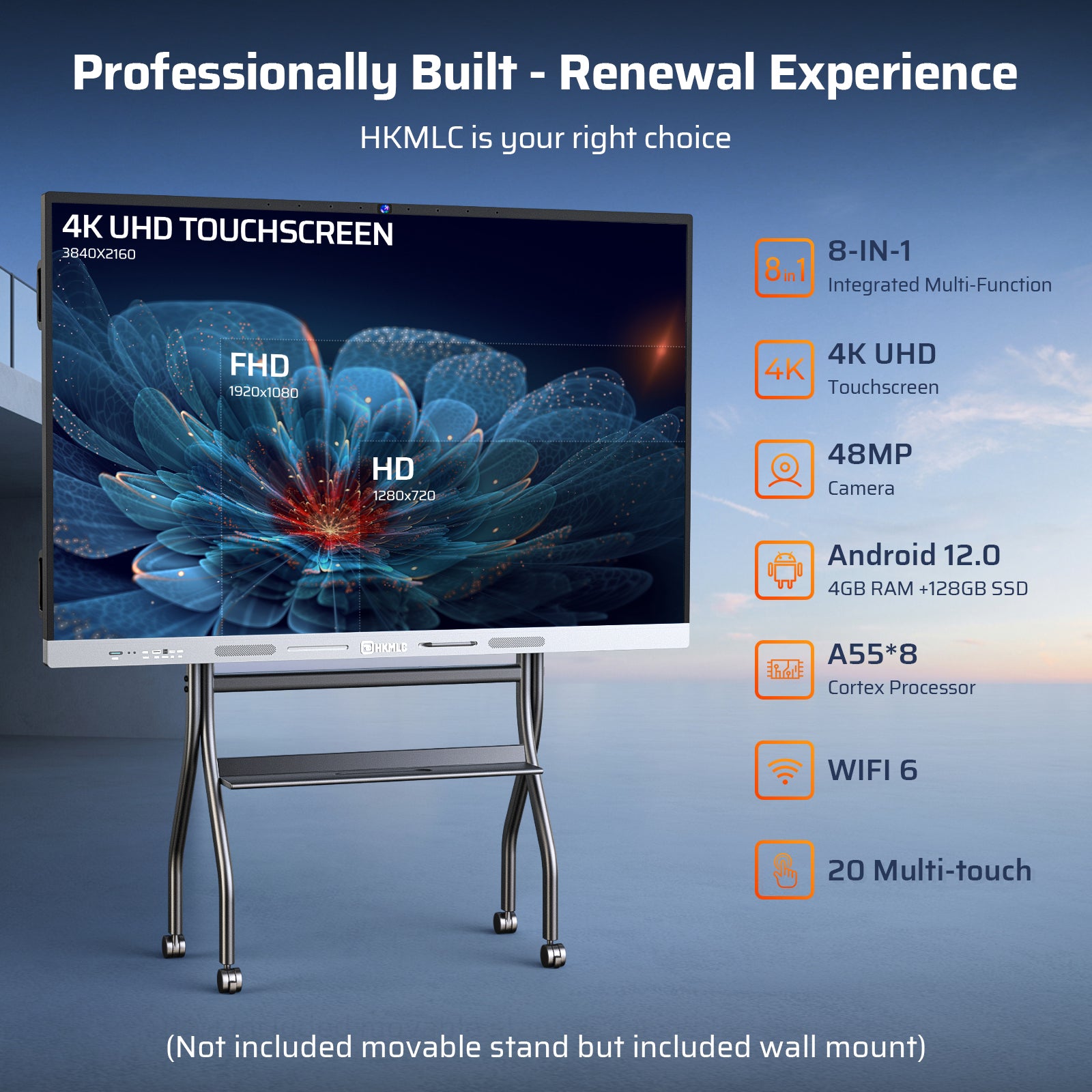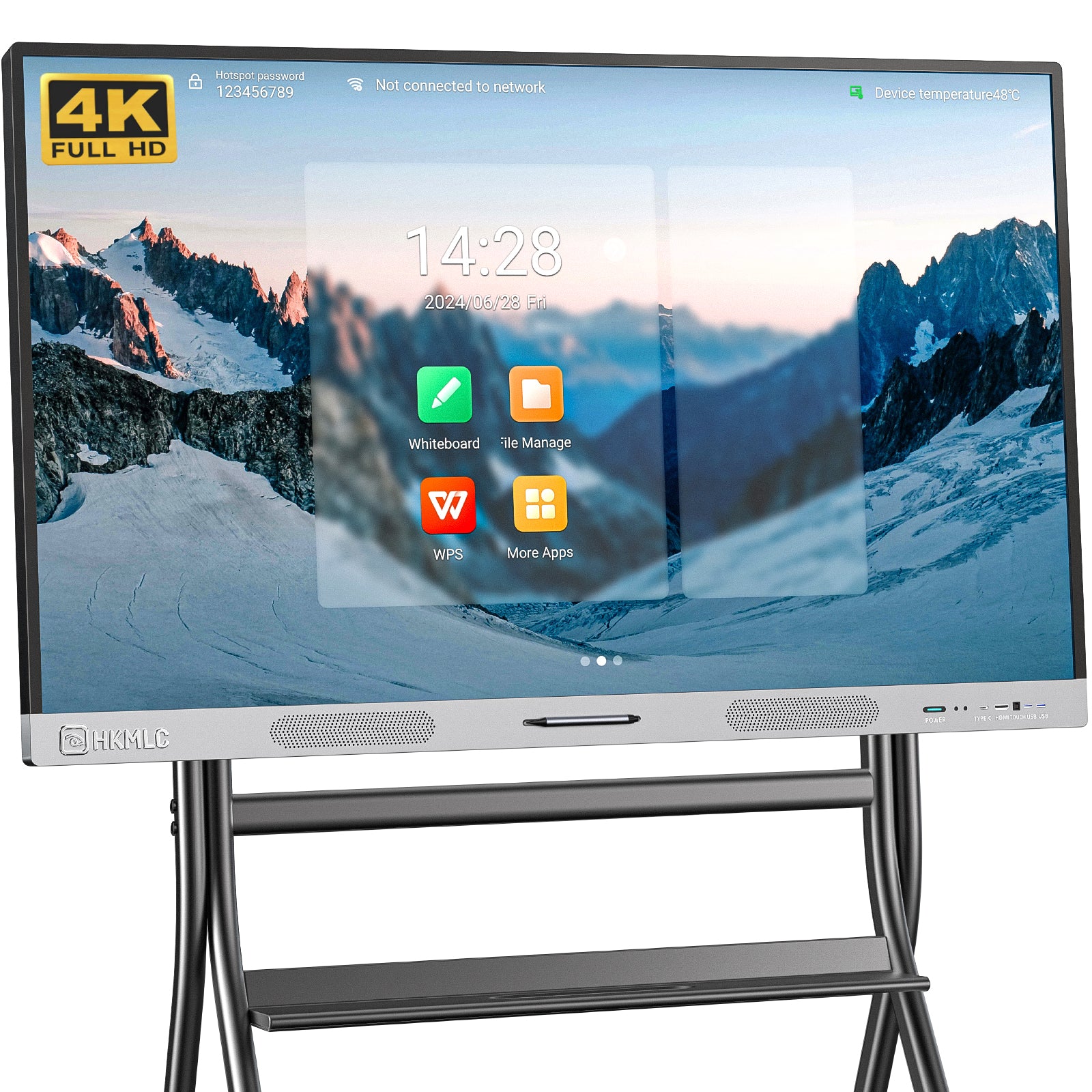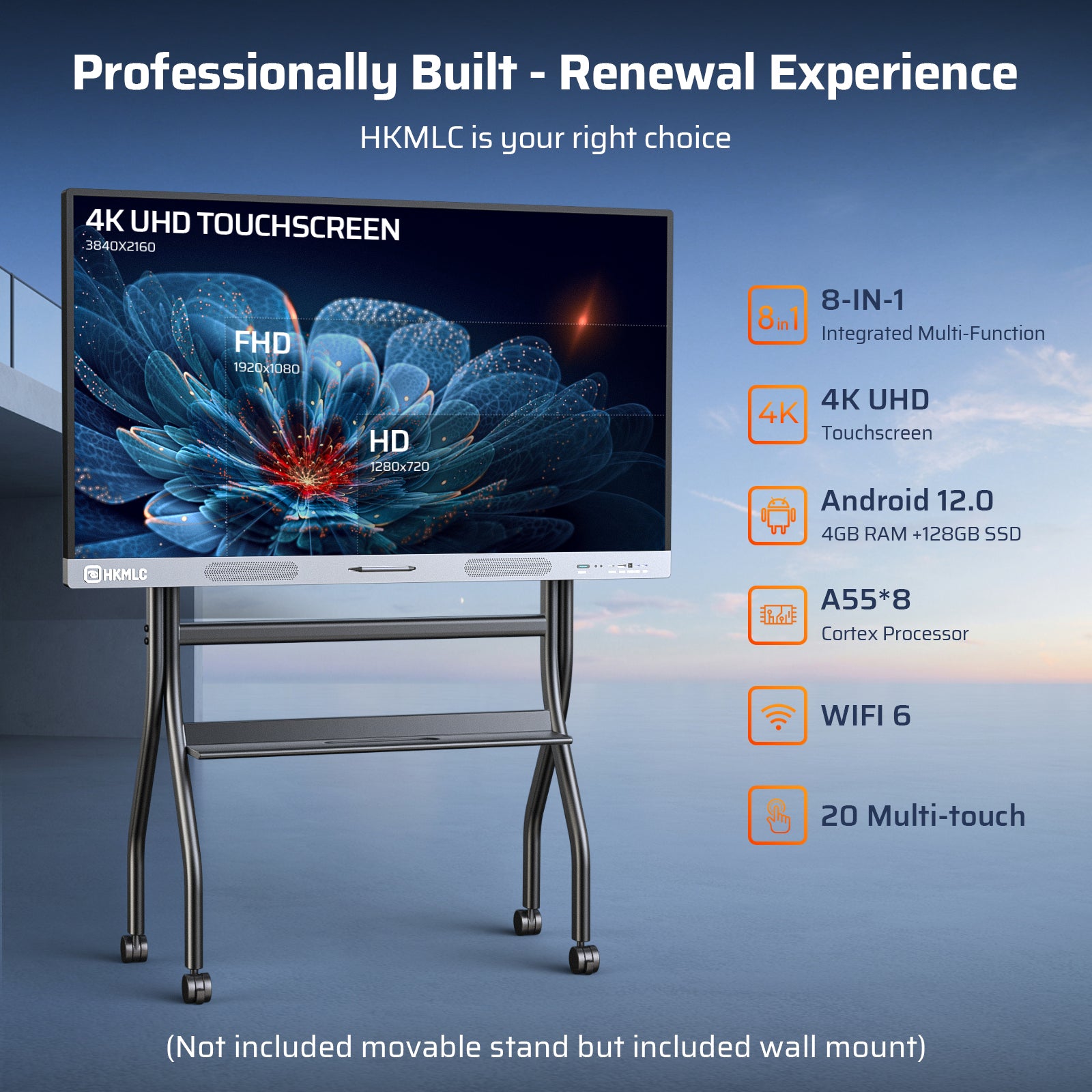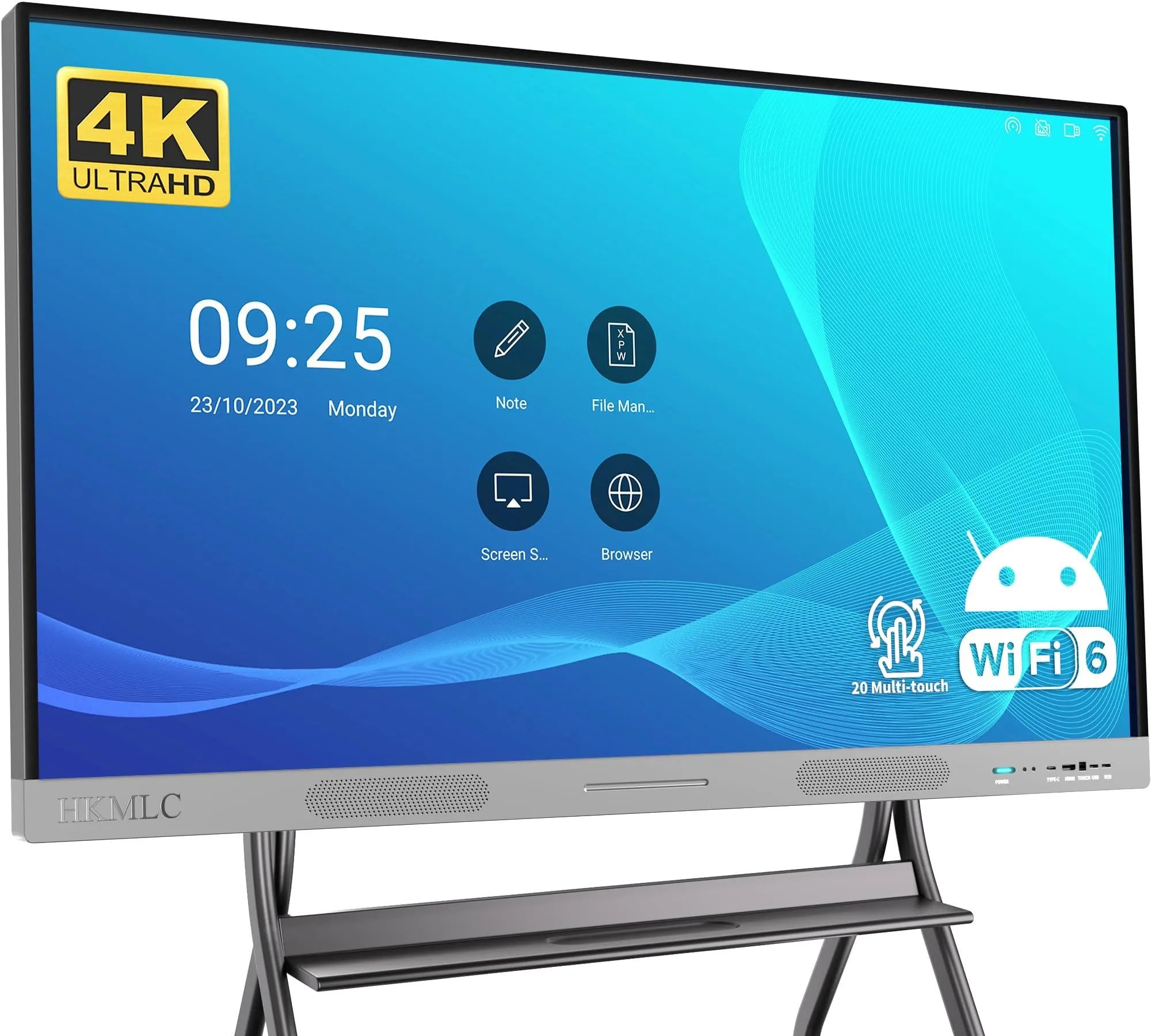Technology has really revolutionized the way we learn, collaborate, and communicate in today's rapidly developing digital era. The smartboard, smart white board, and interactive white board are the most developed inventions of today's technology, used both in classrooms and businesses. These devices are widely recognized for fostering engagement, boosting productivity, and enhancing overall communication. However, it’s important to understand that while both terms—smartboard and interactive whiteboard—are often used interchangeably, they aren't exactly the same. The article will break down the key differences between an interactive whiteboard and a smartboard, explaining their unique features.
What is an Interactive Whiteboard?
An IWB is a large display connected to a computer and projector. The computer's desktop is projected onto the board, that allows users to interact with the content directly on-screen using the stylus, finger, or other input medium. These various boards constitute a tool that mingles the traditional uses of whiteboards with an interactive device, allowing greater efficiency in presenting, annotating, and interacting with digital content in real time.
What is a Smartboard?
A smartboard is an interactive whiteboard under copyright, often referred to as the smart board interactive whiteboard. The idea of interactive teaching and business presentations was revolutionized by a smartboard developed and released by Smart Technologies. Though being very similar to other interactive whiteboards, often people use the term "smartboard" when describing the generic interactive whiteboard, which is generally incorrect because a smartboard is the product of a specific brand and has its own specific features and software.
Key differences between an Interactive Whiteboard and a Smartboard:
While smartboards are kinds of interactive whiteboards, not all interactive whiteboards are smartboards. Let's break down some of the main features that differ between a generic interactive whiteboard and a branded Smartboard, which will help you make an informed decision.
1. Brand and Ecosystem
Interactive Whiteboard: This is a generic term that describes a class of technology and there are multiple brands/models available such as Promethean, Ricoh, and Sharp amongst others each with their own different features and functions. Because IWB's are created by several different manufacturers the ecosystem is less standardized.
Smartboard: Of course, since Smart Technologies builds smartboards, you can be sure that you are acquiring a product connected with the Smart ecosystem. If you are already using tools or software from Smart Technologies, such as Smart Notebook, then a smartboard will offer seamless integration.
2. Software
Interactive Whiteboard: Depending on the manufacturer, interactive whiteboards make use of a host of different software platforms. Some may have you using third-party software, while others provide basic functionality out of the box. This may provide flexibility, but it might also raise some compatibility issues if you happen to be running multiple systems or devices.
Smartboard: One of the major advantages of Smartboards is the availability of software known as Smart Notebook, which is user-friendly and designed primarily for interactive teaching and presentation. This is a proprietary software with various interactive tools, hence very well received in educational institutions. Also, the users of Smartboard may also access Smart Learning Suite interactive elements like gamification and lots more that are tailored to classroom settings.
3. Connectivity and Collaboration
Interactive Whiteboard: Most interactive whiteboards are designed with collaboration in mind. The majority of interactive whiteboards feature multi-user capabilities, where two or more users can interact with the board simultaneously. There's also a range of remote collaboration options such as Zoom, Microsoft Teams, and Google Meet, though again to a certain degree depending on the brand and model.
Smartboard: The smartboards work excellent for a collaborative environment and include features like Smart Ink, multi-user ability, and integration with conferencing tools. For these reasons, they are usually the most preferred when it comes to business meetings and classroom environments that require immense collaboration and interaction in them.
Both Interactive Whiteboards and Smartboards come up with new ideas to bring in more collaboration, learning, and communication. Where Smartboards offer a seamless experience with high-end features and reliable software, interactive whiteboards give much room for choice and flexibility. Knowing some of the basic differences should provide you with a better idea of how to select which solution best fits your needs and optimizes your teaching, presentation, or corporate meeting. Your final decision may depend on your budget, the type of software features you need, and the amount and quality of support you.
Choose the HKMLC Smartboard for Enhanced Interactive Experiences
The HKMLC Smartboard is not just a powerful interactive whiteboard, but an exceptional tool that drives collaboration in both education and business. With its high-definition display, multi-user capabilities, and seamless software integration, it delivers innovative solutions for teaching and meetings. Whether you're inspiring students in the classroom or fostering teamwork in the boardroom, the HKMLC Smartboard is designed to meet your needs.
Explore the HKMLC Smartboard today and take your modern teaching and office setup to the next level! Visit hkmlc.com for more information and contact us for a personalized demo.














